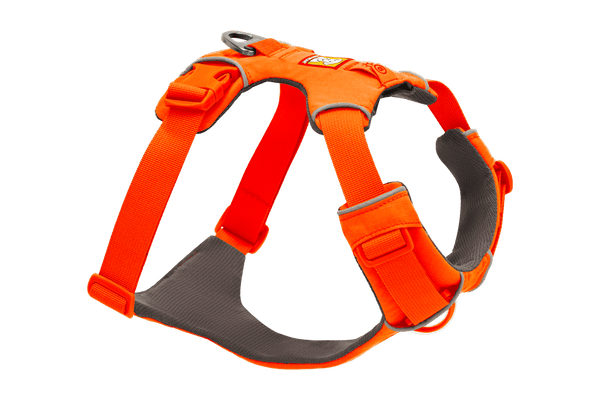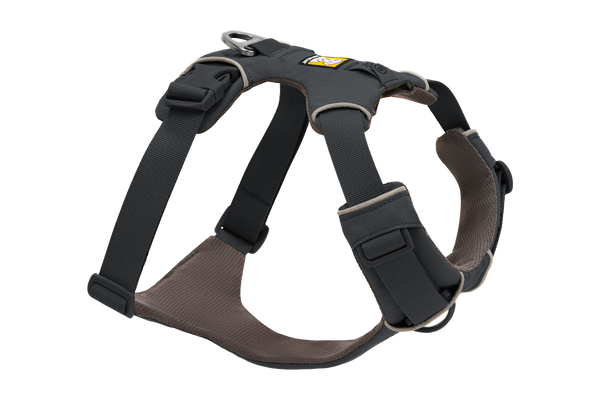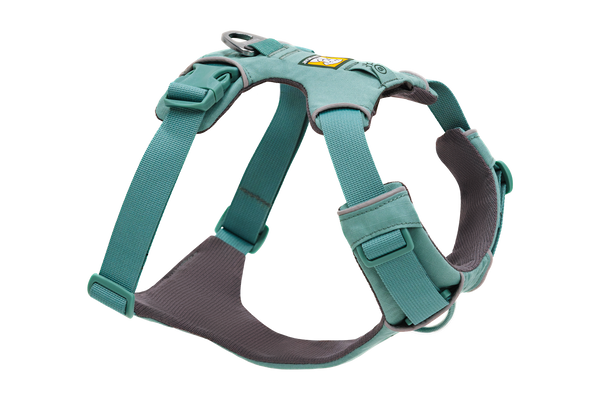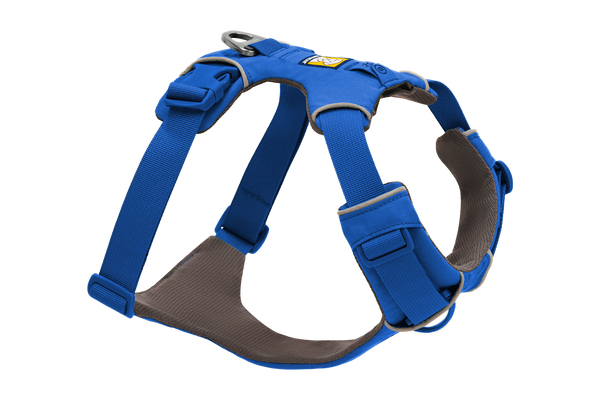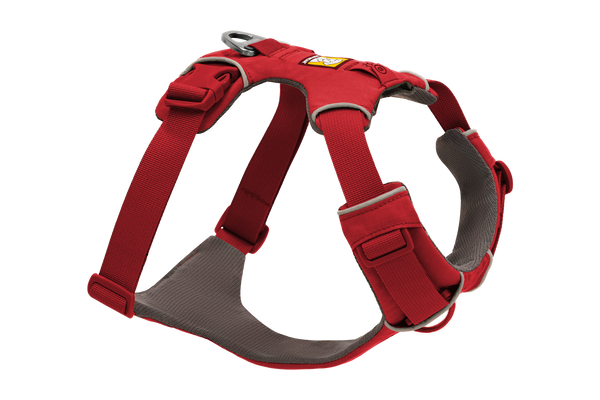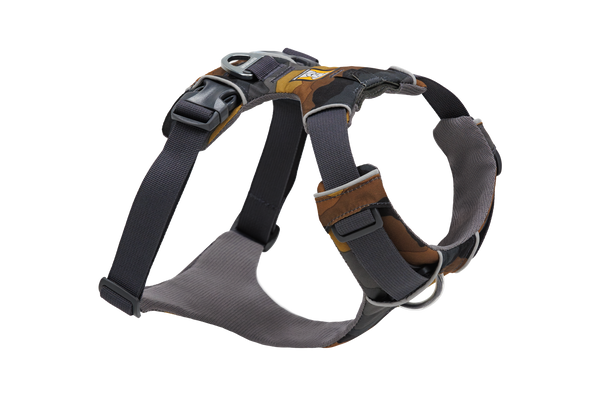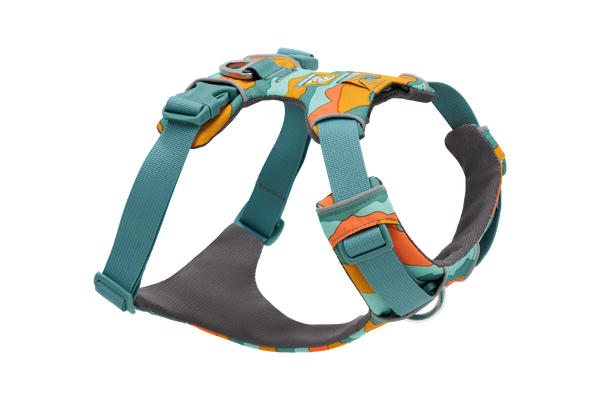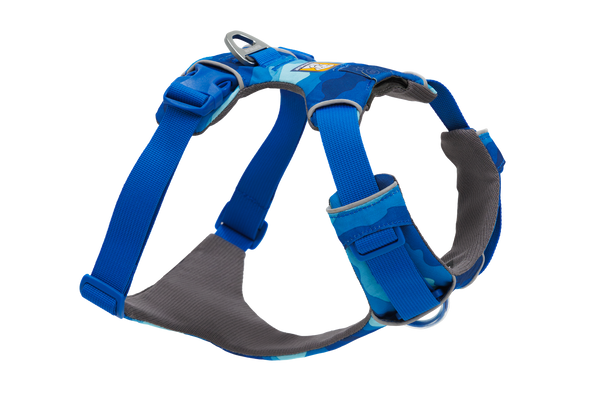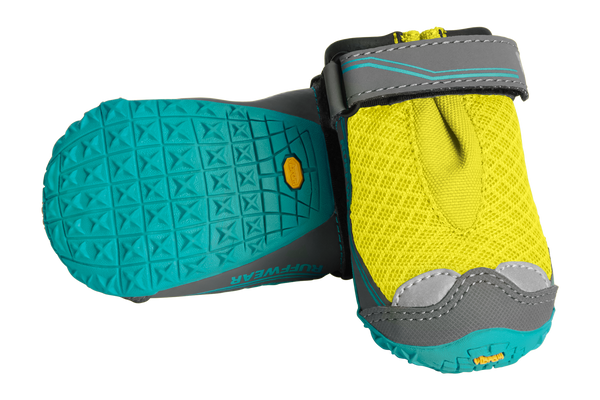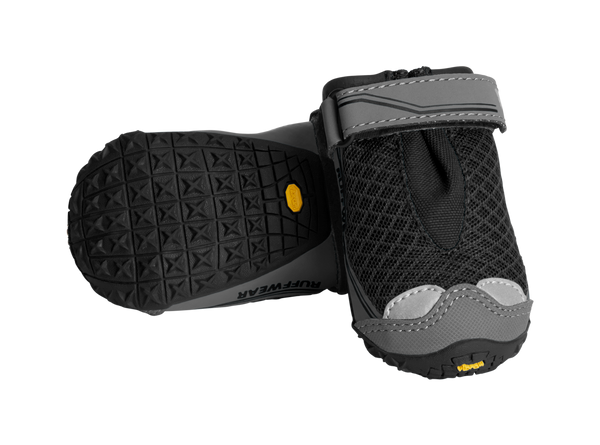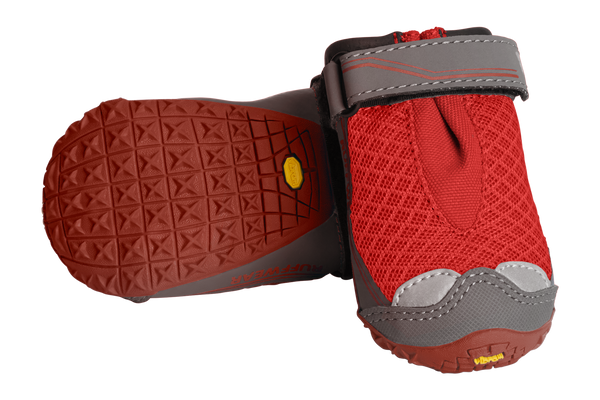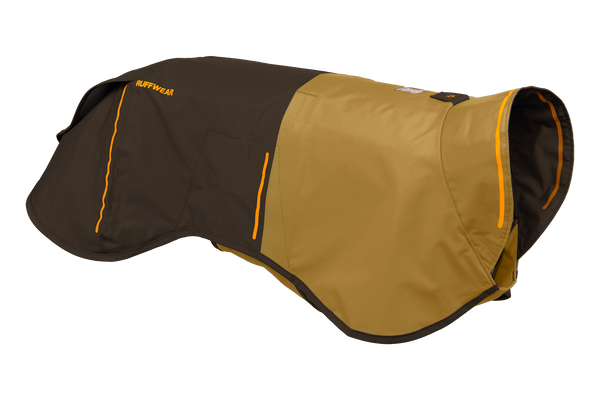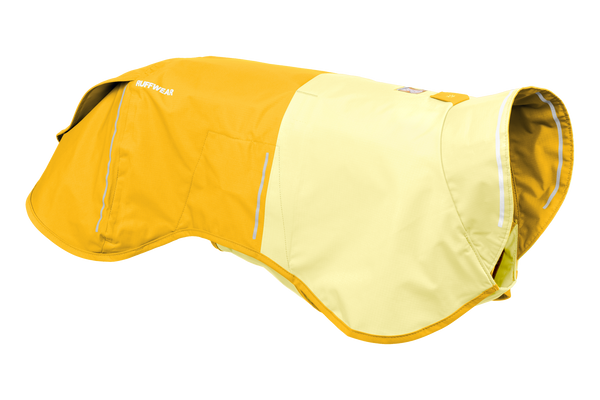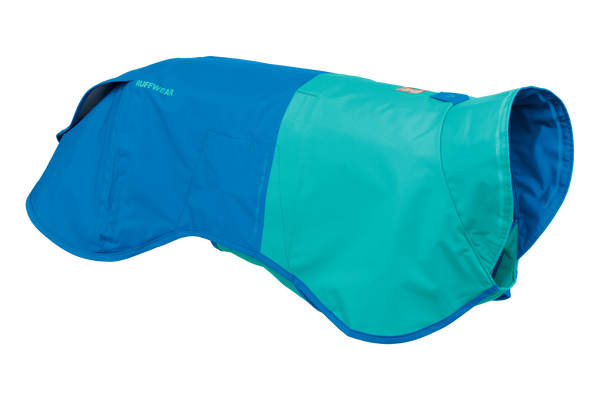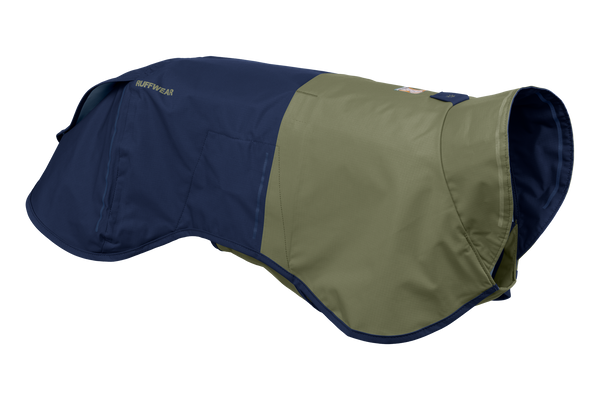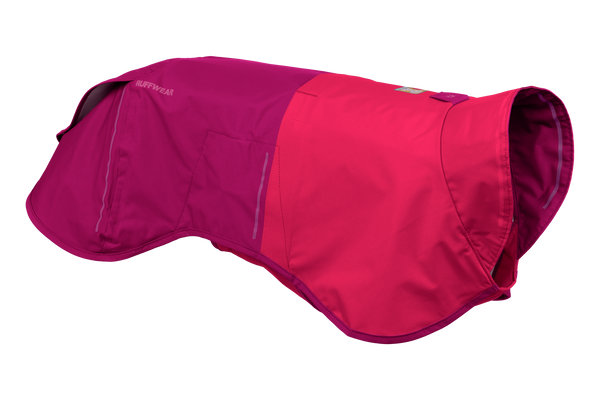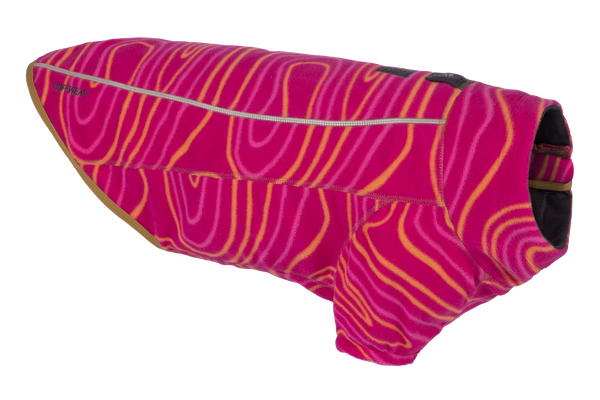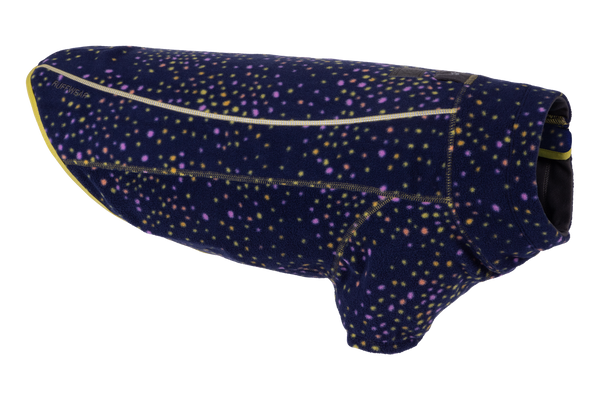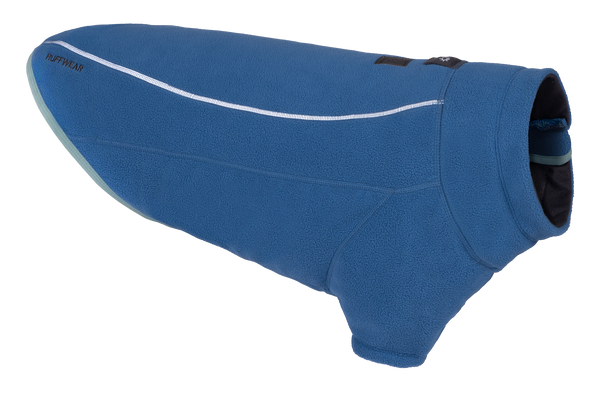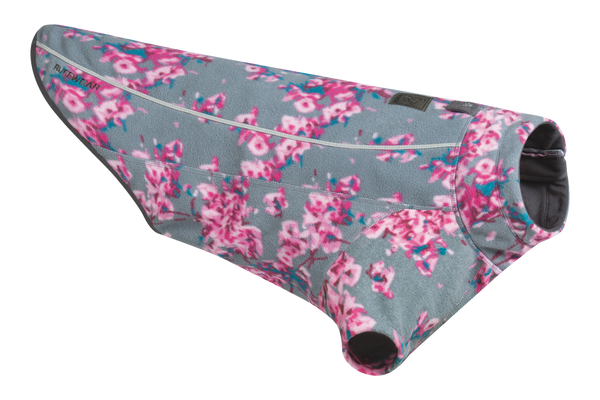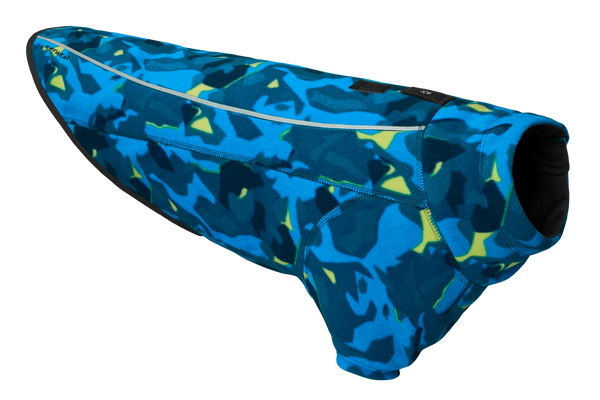Our Carbon Pawprints
By Huw James
Ruffwear Ambassador Huw James is a scientist, adventurer, photographer, and film maker. He spends most of his life in the outdoors as a climber, mountaineer, runner, and everything in between. Huw’s four-legged adventure buddy, Finn, literally chose Huw when he pawed at his leg whilst surrounded by Labrador Retrievers. Since then, the two have only been separated when Huw heads across the globe to talk on climate change and astronomy. Huw and Finn run, bike, and hike together.
Is It Environmentally Friendly to Have a Dog?
Something I’ve been curious about for a while is to what extent having a dog in my life impacts the planet. Finn is now 12 years old, and our lives revolve around him. He eats every day, he has toys to play with, travels in the van to go places, and has clothes and adventure gear the same as me.

Photography by Huw James
Really, his life is just a smaller version of mine. It makes sense, then, that his carbon pawprint would just be a smaller version of mine, too. Which in some ways is definitely the case, and in others not so much.
As animal lovers, we all enjoy spending time outdoors in the natural world. If you’ve seen any news recently, it's hard to avoid the fact that nature is struggling. Whether it’s the pollution from our industries, or the environment shifts due to climate change, our planet is not doing well.
Systemic change is needed to make the biggest difference, but switching our habits on an individual level can also go some way to making change and mitigating the impact we have on the planet.

Finn sporting the Climate Changer™ Jacket which uses 75% recycled polyester for the fleece.
Looking at Carbon Footprints & Pawprints
One way of measuring our impact on the planet comes in the form of a carbon footprint. I don’t often encourage people to look at their carbon footprint, because it ends up putting all of the blame on the end user, and shifts the blame from the source. It can also force us into strange and unhelpful scenarios where we trade off one carbon-emitting activity for another.
But, carbon footprints are sometimes handy for knowing where our impact occurs as individuals and what changes one can make personally to know we’re at least playing our part.
So, to look more at Finn and his carbon pawprint, let’s look at two areas I mentioned for him: food and apparel.
How Does Dog Food Affect the Environment?
A big part of a dog’s impact on the planet is from their food. Everyone's dog is different but the majority eat meat and vast quantities of it, too. Pets (as a whole) are estimated to eat 20% of the world’s meat and fish, and it feels like my dog is about 10% of that! So it stands to reason that this would have a part to play in the conversation.

Not all foods are equal in their impact.
Some foods, like almonds, have their biggest impact in the sheer amount of water they consume. Some foods, like palm oil, have an impact because people choose to deforest land to grow vast areas of palm forests, leaving a biodiversity desert. And, some foods like beef, have an impact for both these reasons and more. Meat is very resource intensive.
For a single burger it can take over 3KG of feed (grain or soy), 7 square metres of grass and crop growth, and 240 litres of water. Not to mention the carbon emissions and methane emissions built into that too, and that’s all per beef burger. Lamb isn't too far behind in terms of its impact and you go down as you get to chicken too. It seems that we’re giving up a lot of resources for meat.
Every dog is different, as is every household, but in some scenarios, a dog's carbon pawprint can be twice that of a 4x4 car. In the US alone, dogs (and cats) eat the equivalent calories to the human population of France. And a third of those calories come from the meat in their food.

How To Reduce Your Dog's Dietary Carbon Pawprint
Not only do dogs eat a lot of food, but it's mostly very carbon-intense food, like meat. Could they eat something else?
Here are a few things you can do to help reduce your dog’s dietary carbon pawprint. (*Remember: before switching your dog’s diet, consult your vet.)
- Try a different meat: Beef has the highest impact when it comes to carbon emissions. Chicken and other protein sources have far less impact. And some pet food manufacturers are even playing with insect protein now.
- Use your leftovers: As humans, we waste around ⅓ of all food we produce anyway. As long as your vet approves and the leftovers are suitable for your dog, it can definitely vary their diet.
- Feed the proper amount: With that said, a lot of us overfeed our dogs without even knowing it. Making sure we give them the right amount can cut their carbon emissions and make them healthier, too. Again, consult your vet.
There’s still a lot to be discussed here from dog waste to treats and loads more. But for some extra reading on the ethical and environmental impact of your dog’s food, Ethical Consumer has a great guide.
The Environmental Impact of Dog Apparel

Next up is apparel.
We can wrap the dog apparel industry up into the outdoor industry if we like and consider our little pals as adventurers in their own right. The outdoor apparel industry is worth over $15 billion in 2022 – you can’t create that amount of money without having a huge impact on our planet, too.
This comes in the form of carbon emissions, but I’d also love to take a look at fabrics. I still find it weird to think that a lot of clothing is made of plastics. The best thing about plastics is also the worst thing: they don’t biodegrade. Yes, they can break down in the environment into smaller and smaller pieces, but once they are at micro plastic level small (under 5mm), they can hang about in the soil, water, and air – indefinitely.
A lot of the plastics that end up in the environment come from the clothes and apparel we wear. Depending on your wash, billions of these microfibres shed from our clothing and down the washing machine into the waterways.
There are lots of variables when calculating how much is shed per wash, but it seems that the newer the piece of clothing, the more the clothing sheds, so having your clothing for longer seems to help in the fight against microfibers.

Well-made Gear That Lasts
It’s one thing Finn and I have always championed for Ruffwear, longevity. I truly believe that one of the best things we can do is make sure we get well-made gear that lasts a long time. That means less virgin plastics are used to create new garments, and less microfibers will be given off over time. And, here are a few other things you can do to help stop microfibers getting where we don't want them:
- Wash less: I know this is difficult when our pups LOVE getting super muddy. But if we can get away with fewer washes, it’s a great way to limit microfibers.
- Full loads: If we need to wash, let's get it all out of the way in one go, and on a cooler, faster wash if possible. Studies have shown that a quicker wash dramatically reduces microfiber shedding.
- Bag it: When we put it in the wash, we can use special bags to catch the microfibers, just like the lint collector in the tumble dryer. Also handy to keep yours and your dog's clothes separate.

Taking Steps Forward
Just like with carbon emissions, there’s so much more to cover here. The mountain seems insurmountable but just like with any mountain, the solutions start to reveal themselves the closer we get. And it’s going to take everyone.
It's important we experience the very thing we want to conserve for future generations. That’s why adventures with our four-legged friends are so important. A carbon handprint is the carbon we use to do good things. Inspiration, education, fulfilment.
Sometimes our carbon handprints are bigger than our carbon footprints. Dogs bring joy to everyone's lives; I couldn't imagine my life without Finn. So I want to make sure that, where I can, I lessen his impact on the planet.
Want to see more of Huw & Finn? Follow their adventures at: @huwmjames.
